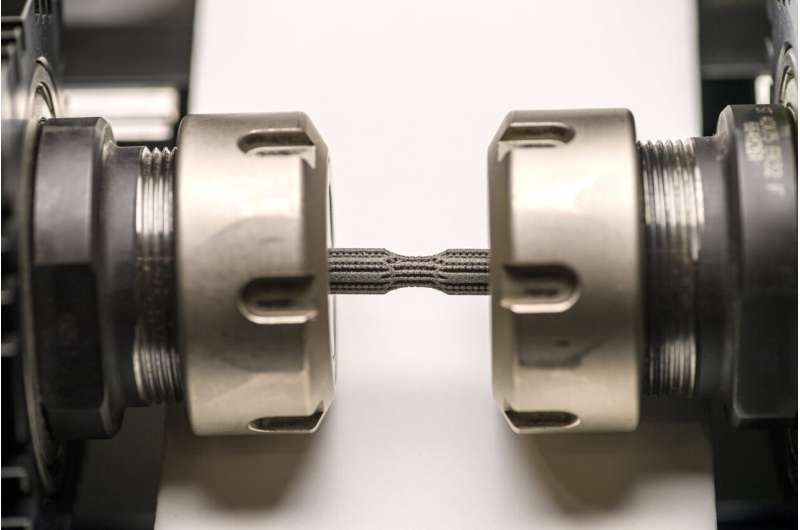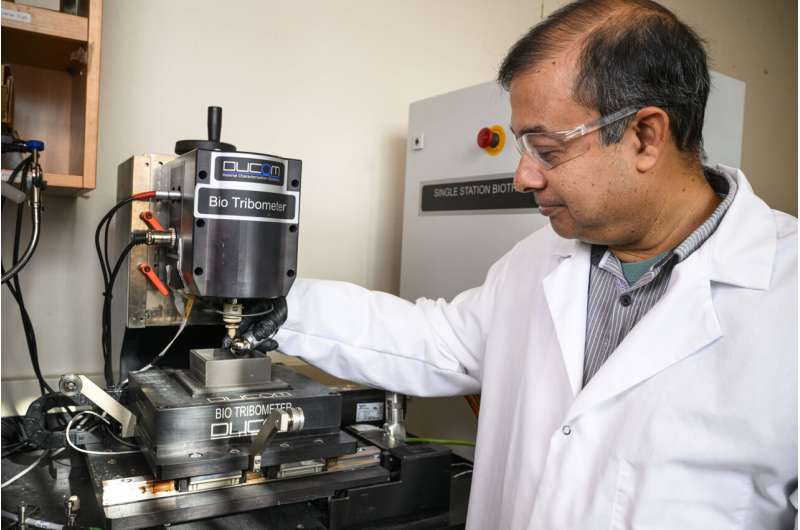This article has been reviewed according to Science X's editorial process and policies. Editors have highlighted the following attributes while ensuring the content's credibility:
fact-checked
trusted source
proofread
Infection-resistant, 3D-printed metals developed for implants

A novel surgical implant developed by Washington State University researchers was able to kill 87% of the bacteria that cause staph infections in laboratory tests, while remaining strong and compatible with surrounding tissue like current implants.
The work, reported in the International Journal of Extreme Manufacturing, could someday lead to better infection control in many common surgeries, such as hip and knee replacements, that are performed daily around the world. Bacterial colonization of the implants is one of the leading causes of their failure and bad outcomes after surgery.
"Infection is a problem for which we do not have a solution," said Amit Bandyopadhyay, corresponding author on the paper and Boeing Distinguished Professor in WSU's School of Mechanical and Materials Engineering.
"In most cases, the implant has no defensive power from the infection. We need to find something where the device material itself offers some inherent resistance—more than just providing drug-based infection control. Here we're saying, why not change the material itself and have inherent antibacterial response from the material itself?"
Titanium materials used for hip and knee replacements and other surgical implants were developed more than 50 years ago and are not well suited to overcoming infections.
Although surgeons often treat preemptively with antibiotics, life-threatening infection can occur right after surgery or weeks or months later as a secondary infection.
Once an infection sets in as a fuzzy, fine film on an implant, doctors try to treat it with systemic antibiotics. In about 7% of implant surgery cases, though, doctors have to perform a revision surgery, removing the implant, cleaning the area, adding antibiotics and putting in another implant.

Using 3D-printing technology, the WSU researchers added 10% tantalum, a corrosion-resistant metal, and 3% copper to the titanium alloy typically used in implants. When bacteria come into contact with the material's copper surface, almost all of their cell walls rupture.
Meanwhile, the tantalum encourages healthy cell growth with surrounding bone and tissue leading to expedited healing for the patient. The researchers spent three years on a comprehensive study of their implant, assessing its mechanical properties, biology and antibacterial response both in the lab and in animal models. They also studied its wear to make sure that metal ions from the implant won't wear off and move into nearby tissue causing toxicity.
"The biggest advantage for this type of multifunctional device is that one can use it for infection control as well as for good bone tissue integration," said co-author Susmita Bose, Westinghouse Distinguished Professor in the school. "Because infection is such a big issue in today's surgical world, if any multifunctional device can do both things, there's nothing like it."
The researchers are continuing the work, hoping to improve the bacterial death rate to the standard of more than 99% without compromising tissue integration. They also want to make sure that the materials offer good performance under real-world loading conditions that patients might use, such as for hiking in the case of a knee replacement.
The researchers are working with WSU's Office of Commercialization and have filed a provisional patent.
More information: Amit Bandyopadhyay et al, Additively manufactured Ti–Ta–Cu alloys for the next-generation load-bearing implants, International Journal of Extreme Manufacturing (2023). DOI: 10.1088/2631-7990/ad07e7



















